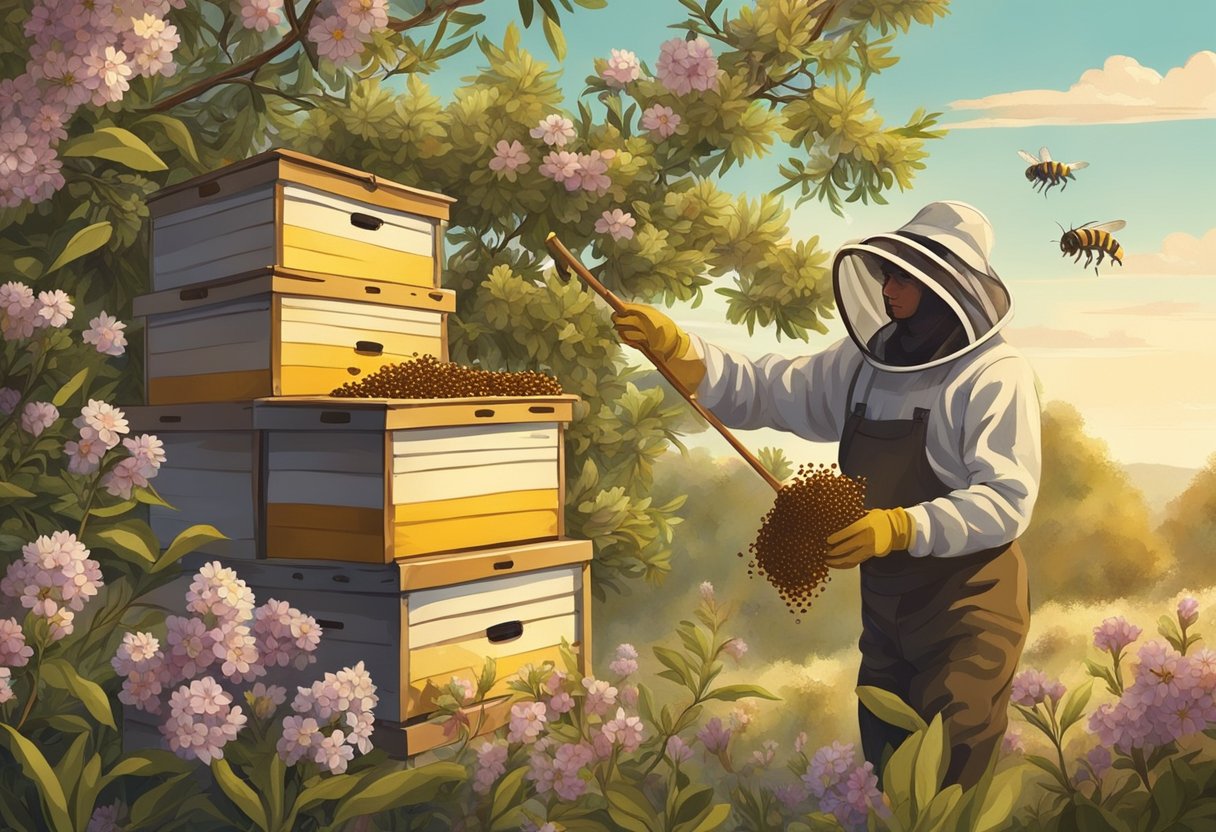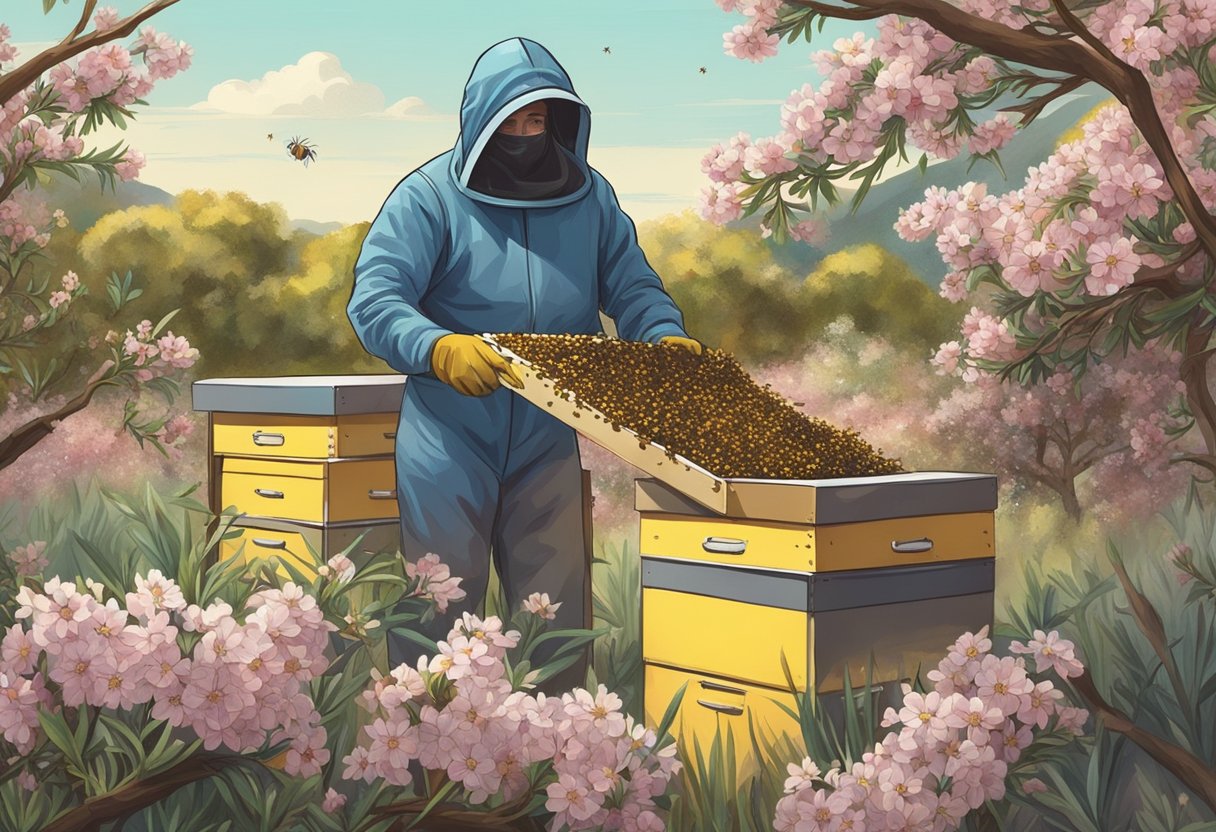Manuka honey is a highly sought-after variety of honey known for its unique properties, originating from New Zealand. This type of honey is produced by bees that pollinate the native manuka bush, Leptospermum scoparium. The distinctive characteristics of manuka honey, including its antibacterial qualities, are attributed to compounds like methylglyoxal (MGO) and leptosperin, which are present in higher concentrations than in other honeys.

The cost of manuka honey is significantly higher than that of standard honey, and this is due to several factors. The production process is more labor-intensive because the manuka bushes flourish in remote, difficult-to-access regions, requiring beekeepers to go to great lengths to harvest the honey. Additionally, the flowering period of the manuka plant is relatively short, which limits the timeframe in which the honey can be collected each year, contributing to its scarcity and exclusivity.
The demand for manuka honey has risen globally, not only for its health benefits, such as supporting wound healing and boosting digestion, but also for its distinctive taste. However, the industry also faces challenges, such as competition over naming rights and the need to ensure authenticity and prevent counterfeiting, which exacerbates the costliness of true manuka honey. Despite these challenges, many consumers find the unique benefits of manuka honey to justify its premium price tag.
Let’s talk more about why is Manuka honey so expensive compared to regular honey.
What is Manuka Honey?
Genuine Manuka honey is a premium honey sourced from the nectar of the Manuka bush, also known as Leptospermum scoparium, which is native to New Zealand. This honey is distinct due to its Unique Manuka Factor (UMF), a quality trademark that certifies its purity and quality. The UMF rating is based on concentrations of three compounds: methylglyoxal (MGO), dihydroxyacetone, and leptosperin, which contribute to the honey’s unique properties.
The nectar of the authentic Manuka flower imparts this honey with its strong, earthy flavor. Bloom occurs only for a few weeks each year, which limits the period when bees can forage this nectar, contributing to the product’s scarcity. The Manuka tree blossoms provide the sole ingredient in pure Manuka honey, classifying it as monofloral—coming from a single plant species.
Environmental conditions, like weather and soil composition, influence the potency and uniqueness of Manuka honey. New Zealand’s strict regulations and rigorous testing ensure the authenticity of the honey being sold, maintaining its high standard.
| Constituent | Role in Manuka Honey |
|---|---|
| Methylglyoxal | Imparts antibacterial properties |
| Leptosperin | Assists in identifying authenticity |
| Dihydroxyacetone | Found in the nectar; converts to MGO |
Genuine Manuka honey’s reputation arises from its reported health benefits, which include antibacterial and healing properties. The synergy of its exclusive components solidifies its position as a sought-after commodity in the global market.
Unique Properties of Manuka Honey
Manuka honey, a unique variety from New Zealand, is distinguished by its potent antibacterial components and the Unique Manuka Factor, each contributing to its remarkable healing properties that stand out in the honey market.
Methylglyoxal (MGO) and Antibacterial Activity
Authentic Manuka honey contains high concentrations of methylglyoxal (MGO), an organic compound largely responsible for its exceptional antibacterial properties. These properties are quantified through MGO levels, correlating to the honey’s ability to inhibit bacterial growth. The presence of MGO renders Manuka honey effective not only for consumption but also as a topical agent for skin infections, making it a sought-after natural remedy for treating wounds and bolstering the immune system.
Unique Manuka Factor (UMF) Certification
The Unique Manuka Factor (UMF) is a quality trademark that certifies the antibacterial potency of Manuka honey. UMF measures not just the MGO content but also the presence of leptosperin and dihydroxyacetone, compounds specific to Manuka honey. A UMF rating, ranging from UMF 5+ to UMF 20+, indicates both the purity and strength of the honey, which is directly linked to its healing efficacy and, subsequently, its value.
Healing and Health Benefits
Researchers attribute several health benefits to Manuka honey beyond its antibacterial function. It is celebrated for its anti-inflammatory and antioxidant capabilities, making it a multi-purpose therapeutic food. People often utilize it to soothe sore throats, assist with digestive health, and support the immune system. When applied as a wound dressing, its anti-inflammatory properties have the potential to reduce redness and heal inflamed skin. These healing attributes reinforce Manuka honey’s stature as a superior health product.
Production and Harvesting
The production and harvesting of manuka honey are pivotal factors contributing to its high cost, involving distinct phases that demand precise timing and laborious efforts to maintain quality.
Manuka Honey Cultivation
Manuka honey originates from bees that pollinate the manuka bush, Leptospermum scoparium, found predominantly in New Zealand. These bees collect nectar from the manuka flowers to produce honey with unique properties. The cultivation process begins with healthy hives placed in carefully selected locations where manuka bushes flourish. Beekeepers monitor the hives to ensure optimal health and productivity of the bees, as they play a crucial role in the production phase.
Short Blooming Period and Harvesting
The manuka bush has a notably short blooming period, which can last as little as six weeks per year. This limited timeframe for bees to collect nectar and produce honey creates a substantial constraint on yield. During this period, beekeepers must be vigilant and prepared to harvest the honey at the peak of its quality. Harvesting involves the careful removal of frames from hives without harming the bees or the hive structure. This process must align with the bloom cycle to maximize the honey’s potency and quantity.
Extraction and Processing
Post-harvest, the production phase continues with the extraction and processing of manuka honey, which must adhere to stringent quality standards. The honey is extracted from the comb using a centrifuge, and it’s then filtered to remove impurities. Despite advancements, the extraction process remains labor-intensive, contributing to higher production costs. After extraction, the honey is tested to verify its purity and potency before being packaged. This rigorous testing is essential for classifying the honey’s unique signature compounds, ensuring premium quality remains consistent, which reinforces the product’s high value in the market.
Factors Influencing Cost

Manuka honey’s elevated price tag can be primarily attributed to its limited supply, distinct varieties, extensive production process, and stringent import regulations. These factors will help you understand why is Manuka honey so expensive compared to regular honey.
Limited Supply and Rarity
Manuka honey is sourced from the nectar of New Zealand’s Manuka tree, which experiences a very brief flowering period. This limitation not only constrains the harvest window but also bestows a rare status upon the honey, contributing significantly to its cost.
Monofloral vs. Multifloral Varieties
Monofloral Manuka honey, derived exclusively from the Manuka tree’s flowers, is coveted for its high quality and commands a higher price. In contrast, multifloral Manuka honey, though still valuable, is more affordable as it includes nectar from various plant species alongside Manuka flowers.
Labor Intensive Production
The production of Manuka honey is a labor-intensive process, from navigating New Zealand’s rugged terrains to access Manuka trees to employing meticulous harvesting methods. This intensive labor directly reflects in the product’s final cost.
Regulations and Importation Costs
Stringent regulations and a trademark, ensuring Manuka honey’s purity and origin, are in place to protect its quality. Importation costs add another layer of expenses due to the compliance with both New Zealand and international standards.

